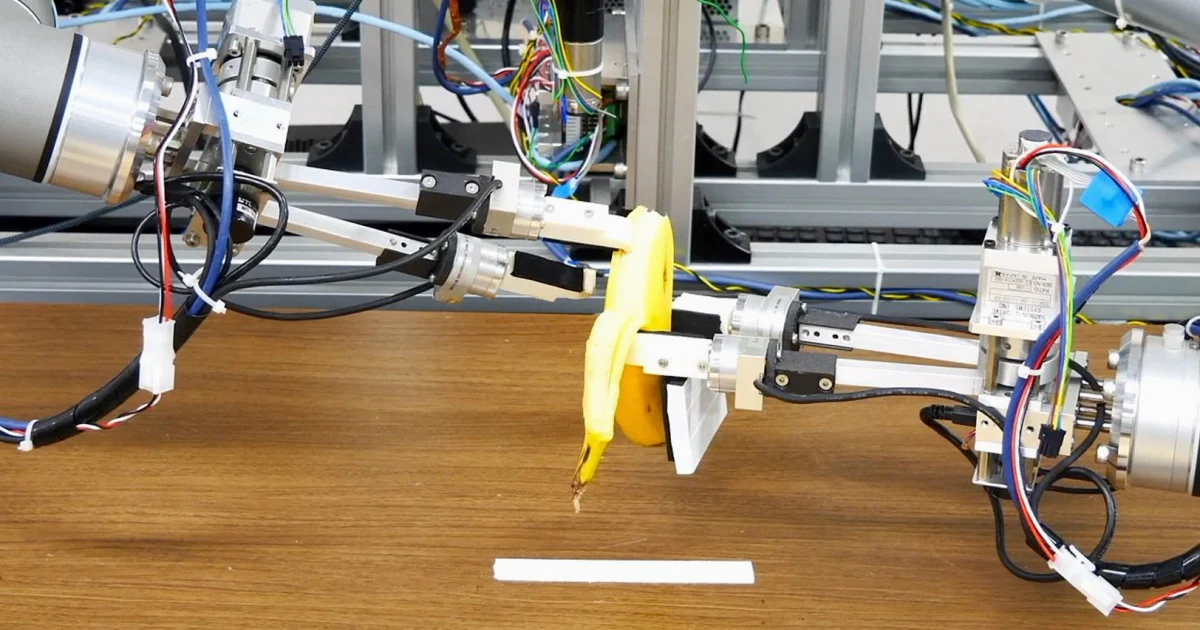This Japanese Robot Can Now Peel A Banana
AI-powered robots are progressively being applied into industrial kitchens so as to help the foodservice workforce, at the least with small however without problems repeatable duties like frying chips. A latest video from researchers with the Intelligent Systems and Informatics Laboratory on the University of Tokyo confirmed a robotic that can be able to some thing extra complicated, however. The gadget capabilities massive, wire-encumbered palms, that are proven trying to remedy the tremendously hard system of peeling a unmarried, medium-sized banana.
While the ability might also additionally come smooth to us human beings, peeling a banana is a surgical system with numerous steps. Most machines are not ready to address some thing this tricky, and in general, machines were some distance higher at supporting with massive-scale duties that most effective contain a unmarried and rather repeatable step. This is why it makes experience that the brand new Japanese robotic, which represents an higher echelon of superior AI technology, presently most effective has a 57% achievement price, in step with NBC. Yes, this means, in its cutting-edge iteration, the robotic fails at peeling bananas the alternative 43% of the time on average.
This robotic is a part of a extra fashion inside the worldwide foodservice industry, in which AI is developing regularly extra beneficial in releasing up human employees who might in any other case be caught acting basic, repetitive duties. In October 2019, the New York Times pronounced that McDonald’s spent loads of hundreds of thousands of bucks obtaining AI-powered and gadget studying-primarily based totally technology.
How does the banana-peeling robotic work?
The robotic’s massive mechanical palms are designed to imitate the motions of actual human palms and palms, this means that the robotic’s “brain” desires to recognize how human palms operate. Unfortunately, programming dexterity right into a robotic isn’t always as easy as writing some strains of laptop code. This is in which AI deep studying – specifically, deep imitation studying tech – comes into play. If you are acquainted with standards like NVIDIA DLSS or Google DeepDream, you could already recognize how synthetic intelligence repurposes current information to create some thing new.
Similarly, AI can discover ways to version actual human conduct by “observing” human beings in actual lifestyles. If you display an AI loads of motion pictures of various human beings peeling bananas in distinctive contexts and with barely distinctive motions, you may paint a large sufficient photo of what the system is meant to appearance like. In theory, this may offer the AI deep imitation studying set of rules with sufficient path to finally entire every of the numerous complicated steps worried in retaining the banana, squeezing the tip, and unwrapping the fruit peel-by-peel. At least, that is how researchers on the University of Tokyo correctly taught the robotic the way to peel bananas at a 57% achievement price in extra than thirteen hours.
Researchers are hoping that robots like this may make lifestyles less difficult at Japanese meals processing centers or maybe fill in for meals carrier employee shortages. However, it could make an effort till those robots are shipped out en masse.

